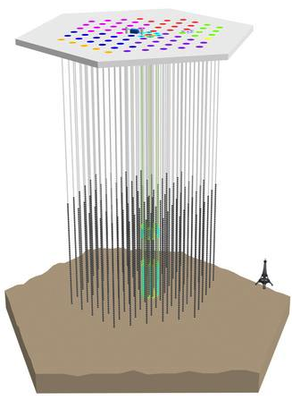The IceCube Neutrino Observatory
|
IceCube is an international collaboration which has constructed and is operating the world's largest neutrino telescope. Its main mission is the discovery and exploration of Galactic and extragalactic sources of high-energy neutrino emission. However, the detector is also well suited for the search for dark matter (WIMPs) and the measurement of cosmic rays, neutrino oscillations and several other topical questions in particle and astroparticle physics. The detector consists of 86 strings each equipped with 60 optical sensors (photomultipliers) which instrument a volume of 1 km3 of clear glacial ice between 1500 m and 2500 m below the gegraphical South Pole. Neutrinos are reconstructed indirectly by the Cherenkov light emitted from secondary charged particles like muons and electrons which are generated in neutrino interactions. More information on the detector and its physics can be found on the IceCube homepage and the web pages of the IceCube group at DESY-Zeuthen with which a close cooperation exists.
The Humboldt IceCube groupThe IceCube group at Humboldt University is involved in searches for point-like sources of cosmic high-energy neutrino emission and participates in the development of efficient neutrino reconstruction techniques. Additionally, we are working on modeling of cosmic sources as to the expected neutrino flux from these sources.
|
 |
